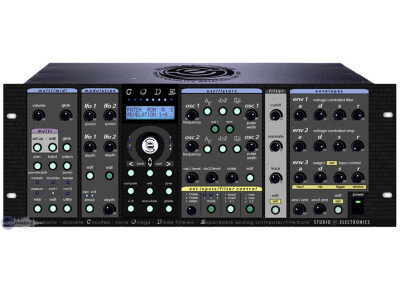Where to buy Code?
Less
There are no classified ads for this product.
Tech. sheet
- Manufacturer: Studio Electronics
- Model: Code
- Category: Analog Synth Racks/Sound Modules
We have no technical specifications for this product
but your help will be much welcomed
»
Videos
User reviews
5.0/5(1 reviews)
5
100 %
4
3
2
1
The best current-days analog synth
Published on 04/20/18 at 04:53° Used in the studio. I don’t recommend to use it live as it’s very sensitive to temperature difference and tends to detune quite quickly. This can be disturbing at first, but hey, it’s pure analog with discrete circuitry so consider it’s already forgiven! Yet, a mere press on the “edit” button in the oscillo section and the mastertune can be augmented or diminished.
° A very sturdy device, with a rather steep learning curve: there are sub-menus and since the screen is small the settings are shortened, making it sometimes difficult to find your way. On the other hand, the filter settings are very ergonomic and work instantly, which is very important as there are Minimoog, Oberheim...…
° A very sturdy device, with a rather steep learning curve: there are sub-menus and since the screen is small the settings are shortened, making it sometimes difficult to find your way. On the other hand, the filter settings are very ergonomic and work instantly, which is very important as there are Minimoog, Oberheim...…
Read more
° Used in the studio. I don’t recommend to use it live as it’s very sensitive to temperature difference and tends to detune quite quickly. This can be disturbing at first, but hey, it’s pure analog with discrete circuitry so consider it’s already forgiven! Yet, a mere press on the “edit” button in the oscillo section and the mastertune can be augmented or diminished.
° A very sturdy device, with a rather steep learning curve: there are sub-menus and since the screen is small the settings are shortened, making it sometimes difficult to find your way. On the other hand, the filter settings are very ergonomic and work instantly, which is very important as there are Minimoog, Oberheim lowpass, bandpass, hipass + optional filters (a maximum of 2 additional filters per channel).
° The sound is pure analog, the kind that hits you in the guts from the first note. Every note you play uses a different oscillator card which can be panned left or right. The Moog filter provides breathtaking lows and mids, which is too much for playing chords (for that, I prefer to use the CS80 filters). I also love the ARP filters which open the sound even more. The oberheim filters aren’t bad, but they’re a bit too well-behaved.
Factory sounds aren’t the better sounding to me, but they give an idea of how diverse the Code’s sounds can be using the usual saw, triangle and pulse waves.
° 2 oscillos + 1 sub + 1 noise + 3 stackable waveshapes per oscillator / 5 available filter types / 3 envelopes / 2 LFOs / unisson mode / multitimbral / programmable aftertouch destination...
° The pads are not the Code’s main asset. However, in single note mode, it’s the king of synths: the sound has an unbelievable presence, it pierces through the mix with no effort. Some criticize its slow envelopes but it’s a bad point: OK, it doesn’t go “bleep bleep” ala R2-D2 or provide Solina-like sound, but in its league this synth is absolutely musical.
° after I purchased it, i haven’t been sure that I’d keep it for a few months as I wondered whether it would suit my synth set. Now, two years later, I can say that it’s a top-notch synth which is worth its price, though it’s quite violent and even going up these days!
( for the record, i bought mine for almost 5k, an 8-voice Code with 8 ARP and CS80 filters; just a look at Schneidersladden’s website is enough to make one dizzy: Omega 8 = 6.000 EUR, CS80 filter: 290EUR, ARP filter : 180 EUR – and don’t forget to multiply by 16 for a total 8 voices!!!)
° A very sturdy device, with a rather steep learning curve: there are sub-menus and since the screen is small the settings are shortened, making it sometimes difficult to find your way. On the other hand, the filter settings are very ergonomic and work instantly, which is very important as there are Minimoog, Oberheim lowpass, bandpass, hipass + optional filters (a maximum of 2 additional filters per channel).
° The sound is pure analog, the kind that hits you in the guts from the first note. Every note you play uses a different oscillator card which can be panned left or right. The Moog filter provides breathtaking lows and mids, which is too much for playing chords (for that, I prefer to use the CS80 filters). I also love the ARP filters which open the sound even more. The oberheim filters aren’t bad, but they’re a bit too well-behaved.
Factory sounds aren’t the better sounding to me, but they give an idea of how diverse the Code’s sounds can be using the usual saw, triangle and pulse waves.
° 2 oscillos + 1 sub + 1 noise + 3 stackable waveshapes per oscillator / 5 available filter types / 3 envelopes / 2 LFOs / unisson mode / multitimbral / programmable aftertouch destination...
° The pads are not the Code’s main asset. However, in single note mode, it’s the king of synths: the sound has an unbelievable presence, it pierces through the mix with no effort. Some criticize its slow envelopes but it’s a bad point: OK, it doesn’t go “bleep bleep” ala R2-D2 or provide Solina-like sound, but in its league this synth is absolutely musical.
° after I purchased it, i haven’t been sure that I’d keep it for a few months as I wondered whether it would suit my synth set. Now, two years later, I can say that it’s a top-notch synth which is worth its price, though it’s quite violent and even going up these days!
( for the record, i bought mine for almost 5k, an 8-voice Code with 8 ARP and CS80 filters; just a look at Schneidersladden’s website is enough to make one dizzy: Omega 8 = 6.000 EUR, CS80 filter: 290EUR, ARP filter : 180 EUR – and don’t forget to multiply by 16 for a total 8 voices!!!)
See less
00
»
Other Studio Electronics analog Synth Racks/Sound Modules
-
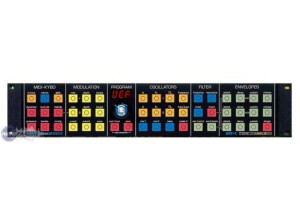
ATC-1
Analog Synth Rack/Sound Module
-
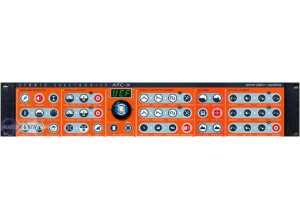
ATC-X
Analog Synth Rack/Sound Module
-
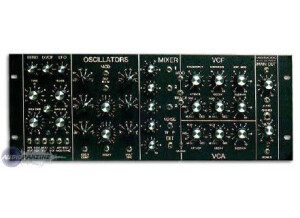
Midimoog
Analog Synth Rack/Sound Module
-
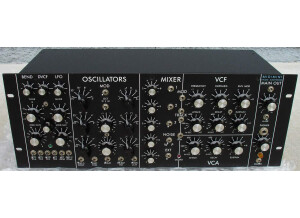
MidiMini
Analog Synth Rack/Sound Module
-

SE-1X Nova - Angel Dust Edition
Analog Synth Rack/Sound Module
-
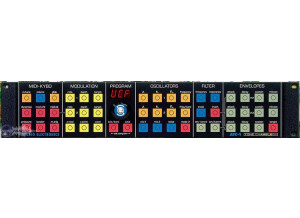
ATC1X
Analog Synth Rack/Sound Module
-
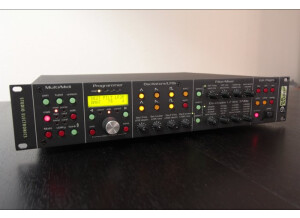
Omega 2
Analog Synth Rack/Sound Module
-
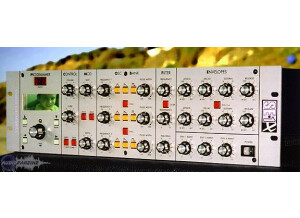
SE-1X
Analog Synth Rack/Sound Module
-
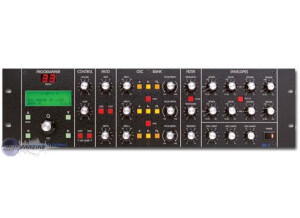
SE-1
Analog Synth Rack/Sound Module
-
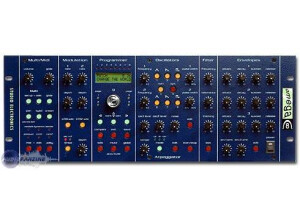
Omega 8
Analog Synth Rack/Sound Module
Other categories in Synthesizers/Racks/Modules
Where to buy Code?
Less
There are no classified ads for this product.

